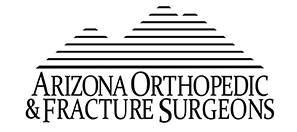Healthcare News
Osteoarthritis vs. Rheumatoid Arthritis: Key Differences
While they both fall under the "arthritis" umbrella and share certain similarities, these diseases have significant differences. Osteoarthritis is caused by the breakdown of cartilage that cushions your joints. Rheumatoid arthritis is an autoimmune disease in which your immune system attacks your body's own tissues in the joints.
Causes of Pain Between the Shoulder Blades
Upper back pain between the shoulder blades has many causes, including muscle strain, herniated discs, arthritis, or, less often, a serious health problem. Treatment for pain between the shoulder blades depends on the cause but frequently includes stretching and medications for pain.
‘Don’t push into pain!’ How to rescue your knees from everything from torn ligaments to injured tendons
From runner’s knee to fraying cartilage, knees are involved in 40% of sports injuries. But it can be hard to pin down what’s wrong, or what to do about it. Just because knee issues are common, that doesn’t mean we should ignore them and soldier on.
What Is Iliopsoas Bursitis?
Iliopsoas bursitis, also called hip bursitis, is inflammation of the iliopsoas bursa. This bursa is a large fluid-filled sac found under the iliopsoas muscle, which supports hip movement. The iliopsoas bursa provides cushion for tendons, ligaments, and muscles to prevent friction during movement.
Electrolytes can give the body a charge, but try not to overdo it
Research on electrolyte supplementation is mostly aimed at athletes, she said. Some sources say that water is fine for anyone in an activity that lasts less than an hour; some say even more activity is needed before anything beyond water is helpful.
Supplements You May Be Considering for Osteoarthritis of the Knee
Some supplements may help relieve symptoms of knee osteoarthritis and increase joint mobility. These could include collagen, curcumin, and Boswellia serrata, among others.
Obesity associated with increased complications after arthroscopic rotator cuff repair
Despite similar pain and function scores, patients who were obese and underwent arthroscopic rotator cuff repair had increased rates of complications, readmissions and reoperations vs. non-obese patients, published results showed.
Should You Worry About Joints Cracking or Popping?
Cracking and popping joints, medically known as crepitus, are normal. Joints are points in your body where two bones meet. You might occasionally hear your knees popping or notice your back or bones crack as you move them.
What is tendon rupture?
A tendon rupture is a break in a tendon, the structure that joins a muscle to a bone. It can result from overuse, an injury, or an underlying condition.
The More You Cycle, the Lower Your Risk of Knee Arthritis
Cycling has always been touted as easy on the knees. But actually preventing arthritis? That’s a new one.


